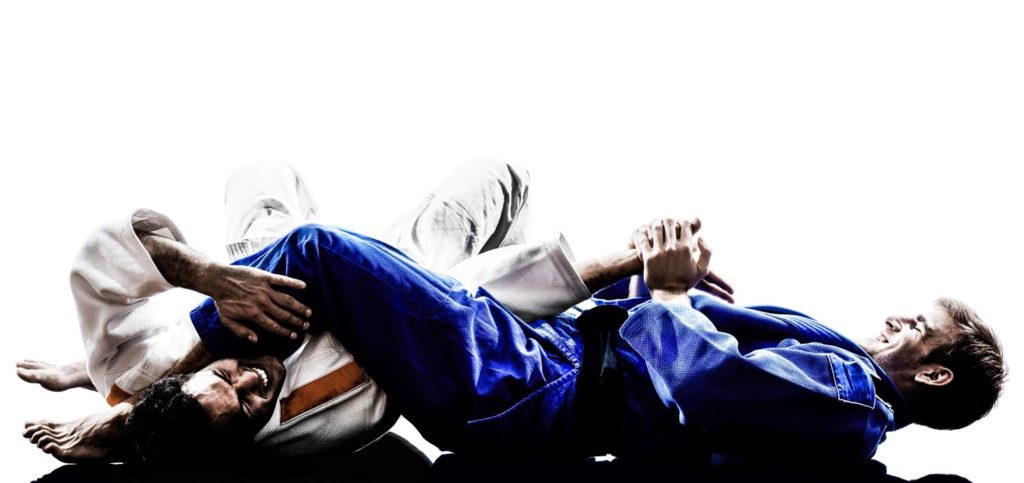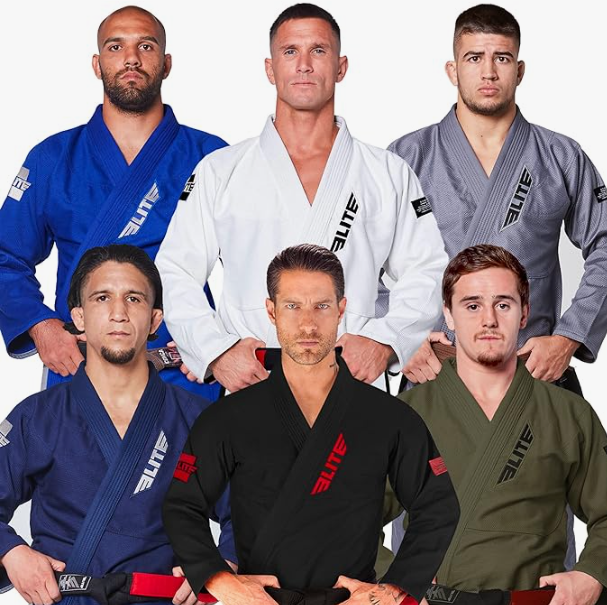
Judo and Jiu Jitsu are just two of the Martial Arts we teach here at Absolute MMA in West Jordan, Utah. While both fighting styles are forms of grappling, there are key differences you need to be aware of depending on what your goals are and when you’re using each set of skills. Judo and Jiu Jitsu are similar in a sense that fighters will clinch with their opponents in a self-defense situation, work for a takedown, then submit their attacker. Below are some of the unique characteristics that separate Judo vs Jiu Jitsu.
The focus of Judo compared to the focus of Jiu-Jitsu
In Judo, much of the emphasis is weighted on standing techniques versus ground techniques. On the other hand, Jiu Jitsu is heavily focused on ground techniques with some standing techniques in the form of self-defense.
The majority of your training in Judo is spent starting on the feet and learning takedowns with some time spent on the ground learning some submissions and pins. You’ll also find yourself doing everything from learning how to fall properly to the footwork needed to execute throwing techniques.
In Jiu Jitsu, you’ll spend some time learning how to take a fight to the ground but most of your classes will cover how to survive, defend and attack on the ground. In a typical Jiu Jitsu class, you might learn techniques such as how to escape if someone mounts you or how to work for a submission if your opponent is in a turtle position.
Different scoring system and rules for each sport
The different scoring systems and rules between the two combat sports go back to the focus of each style.
In judo competition, there are five different types of ways to secure a victory. The first is by a throw in which an opponent is thrown with force and speed which leads to the opponent landing on his/her back. The second is pinning or holding your opponent on the ground for 20 seconds. The third and forth are submission: Chokes and Armlocks. The final method is by referees decision.
When it comes to Jiu Jitsu tournaments we see two basic styles or formats a tournament may follow such as a point system/submission/time limit or a submission-only tournament that may or may not have a time limit. Generally, most Jiu Jitsu competitions end by submissions such as joint locks and chokes. However, there is a point system for moving through a hierarchy of positions and accumulating points that also can secure a victory. As in Judo, the final method is by a referee’s decision.
Our Fighting philosophy
At Absolute MMA our philosophy for these arts is to combine the strengths of each Martial Art. While each art is taught individually, we believe the strength of our program is that we combine them to work systematically together in harmony and effectiveness for both sport and self-defense. We believe having the confidence to grip and engage with a standing opponent will greaten our success while fighting from the ground and vice versa. Our ultimate goal is to be a well rounded grappler from in both disciplines of Martial Arts.
Now that you’ve learned more about the differences between Judo vs Jiu Jitsu, which fighting style are you most interested in? Take a look at Judo Classes, and Brazilian Jiu Jitsu Classes we offer near Salt Lake City, Utah.
Check out our recommended judo and Jui Jitsu Gi:
If you have questions about any of the classes we offer at Absolute MMA, Contact us at https://absolutemma.com/contact/ Give us a call at (801) 255-1166 and start training this week!
Want to learn more about grappling? Read: What Is Grappling And Why Is It Important?

